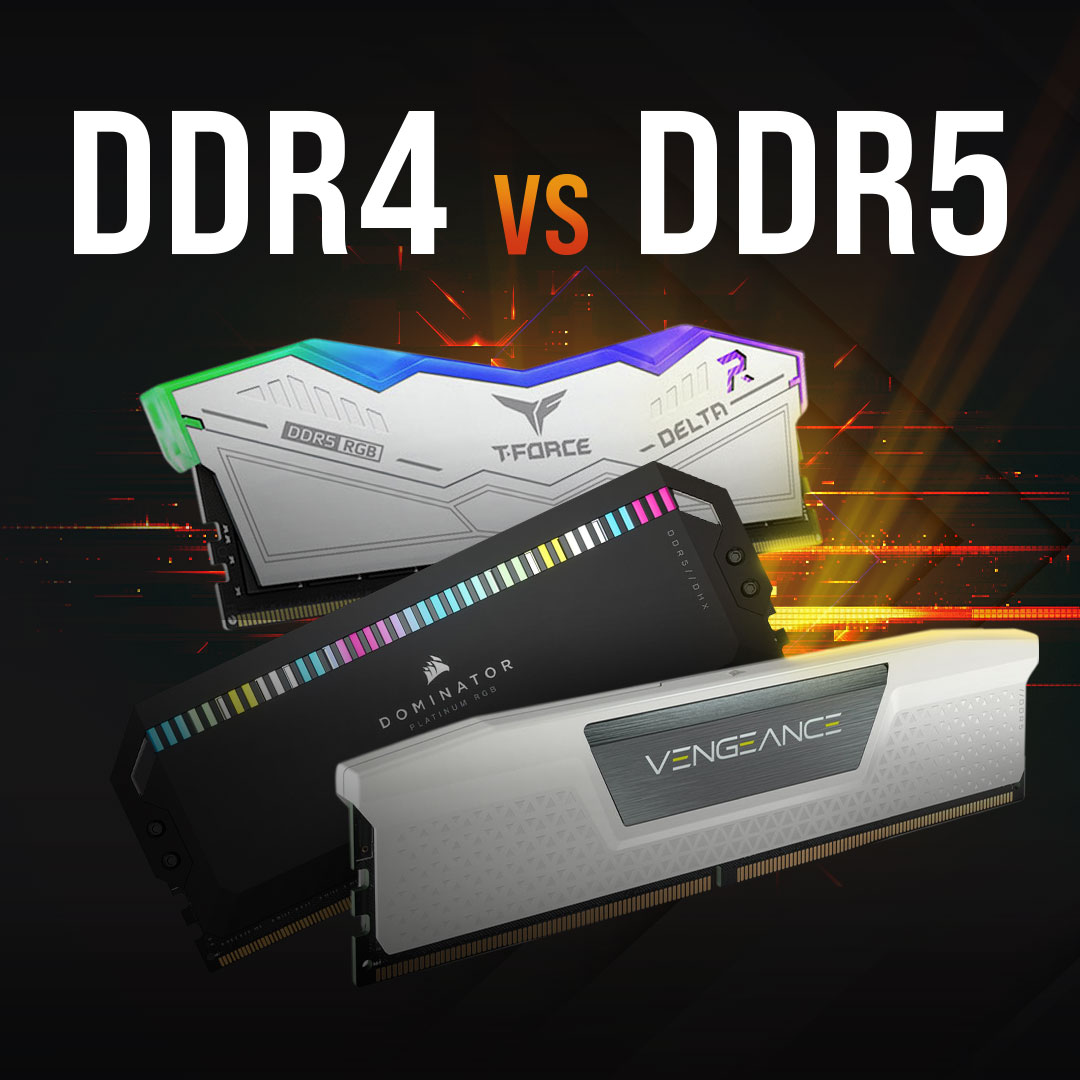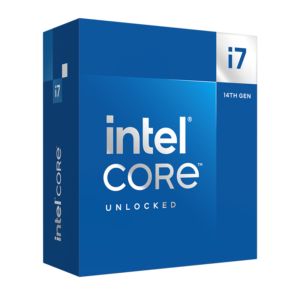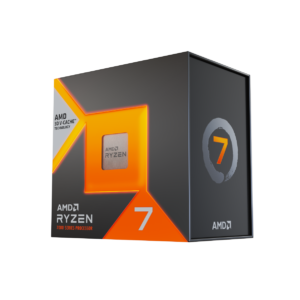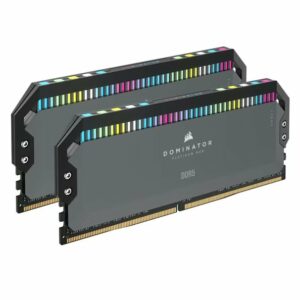DDR5 fast becoming a staple in gaming, since Team Group announced in June 2021 the first DDR5 RAM modules available to consumers. From there, we’ve had both Intel and AMD making hardware available to support the advances of DDR5.

With an upgrade or two, this memory solution is less of a distant wish and ready to be installed in your gaming PC. We’re here to tell you of six differences between DDR4 and DDR5 that you need to know about.
1. Higher Bandwidth
Even in its infancy, DDR5 offered a 50% increase on bandwidth in comparison to DDR4. At the end of its life, DDR4 is starting to reach its limits, with a maximum 3.2Gbit/s at a clock rate of 1.6GHz. DDR5 operates at a minimum of 4.8Gbit/s with clock rates going up to 6000MHz and beyond.
Whilst DDR4 can be overclocked to incredible speeds, the development of XMP 3.0 and AMD EXPO alongside DDR5 means that the achievements of DDR4 are old news. New features to improve performance came with DDR5, too, such as integrated decision feedback (DFE) for ensuring better I/O speeds and data rates.
2. Better Power Consumption
Your energy bills will thank you for this one. A drastic improvement over DDR4 is that DDR5 has a much lower operating voltage which in turn lowers the power consumption. All the components within a DDR5 RAM module – DRAM, buffer chips, clocks, and data buffers use just 1.1V. This eliminates the need for an additional voltage rail, DDR5 also changes the CA bus to pseudo-open-drain logic signalling (PODL) rather and SSTL signalling.
3. New Power Supply Architecture
With improved power consumption, comes an improved power supply architecture, one of the most important changes to DDR technology. Previously, power management for your RAM modules has been handled by the motherboard. With DDR5 DIMM slots, this task has shifted to the memory module, itself, thus allowing for better fine-tuning of system power load. This is achieved thanks to the 12V power management IC (PMIC) equipped on the DIMM slot. As a dedicated circuit, the PMIC is in charge of distributing the 1.1V supply. As a result, signal integrity is improved and noise is reduced.
4. Channel Architecture Developments
Currently, DDR4 DIMM channel architecture looks like a 72-bit bus, made up of 64 data bits and eight EEC bits. DDR5 DIMM architecture features two channels, each 40 bits wide featuring 32 data bits and eight EEC bits. In total, that is an 80-bit bus. The data width may still be the same, 64 bits, but the virtue of having two channels means memory access efficiency is vastly improved. It also gives a cheeky boost to the speed.
As DDR5 DIMM is made up of two channels, they each supply an independent 40-bit channel whilst sharing the residual current device (RCD). The RCD provides the output clocks. In the case of DDR4, it provides two per side whilst with DDR5 it is four output clocks. With the highest density DIMMS and x4 DRAMs, each group of single-rank and half-channels (5 DRAMs) receives its own independent clock. By virtue, DDR5 has improved signal integrity which in turn eliminate the issue of lower noise margins that result from lowering the voltage.
5. Significantly Increased Burst Length
First of all, burst length is the number of bursts used in data transmission, taking place at the effective data rate. The current standard is a burst chop length of four, whilst the burst length is eight. DDR5 doubles this to eight and sixteen, respectively, to increase the burst payload. What this means is, in a single burst 64 bytes of data can be accessed – in line with a typical CPU cache line size. Only one of the independent channels may be used during the process but it offers a significant improvement in simultaneity. In the greater picture of both DIMM channels, this offers much great memory efficiency.
6. Higher Memory Module Capacity
With every new generation, we want bigger and better – DDR5 delivers. It supports DRAM devices with a higher capacity than DDR4 could. Thanks to the buffer chips in DDR5 DIMM, DRAMs up to 64Gbit dense can be used in a single-die package (SPD). By comparison, DDR4 offers a maximum of 16Gbit DRAM. As a result, DDR5 memory modules have the potential go up to 128GB per bar as the tech matures, in contrast to the maximum of 32GB with DDR4.
Additionally, DDR5 offers features including on-die EEC, fault transparency mode, post-package repair, as well as read and write CRC modes. All these support the higher module capacities. In practical usage, gaming PCs equipped with DDR5 are going to be able to have up to 512GB of RAM whilst HEDT with eight memory banks are going to have an entire terabyte at their disposal. This also will change the limits of what is achievable with server RAM. Potentially, up to a terabyte could fit on a single bar of DDR5 RAM!
DDR5 FTW
It may be a while yet before we see 1TB server RAM modules, but DDR5 RAM is entirely accessible for your gaming PCs. Better yet, this technology is only going to continue to develop and improve. So, the real question is do you upgrade now or a few versions down the line?
Thanks to Intel 12th, 13th, and 14th Gen and AMD Ryzen 7000 and 8000 CPUs, there is plenty of tech going round that is compatible with DDR5. By extension, this also means there is a wide selection of motherboards at your disposal. We’ve got some hardware highlights for you, but you can explore our full ranges at Overclockers UK by clicking the buttons below.
ASUS ROG Maximus Z790 Formula (LGA 1700) DDR5 ATX Motherboard
- 12th / 13th / 14th Gen compatible
- 4 x DDR5 DIMM slots
- Overclocked RAM speeds up to 8000MHz
- PCIe Gen 5 technology
- ATX form factor


Intel Core i7-14700KF CPU
- Socket LGA 1700
- 20 (8P + 12E) cores and 28 threads
- 3.40GHz clock speed
- Dual channel DDR4/DDR5 controller
- 5.6GHz single core max turbo
Corsair Vengeance 32GB DDR5 Dual Channel RAM
- 5600MHz clock speed
- CAS 36-36-36-76 timings
- 1.25v VDIMM
- Customise profiles utilising Intel XMP 3.0
- Real-time frequency monitoring with iCUE


Gigabyte X670 Aorus Elite AX (Socket AM5) DDR5 ATX Motherboard
- Ryzen 7000 Series compatible
- 4 x DDR5 DIMM slots
- Supports AMD EXPO overclocking
- PCIe Gen 4 technology
- ATX form factor
AMD Ryzen 7 7800X3D CPU
- Socket AM5
- 8 cores and 16 threads
- 104MB 3D V-Cache
- Dual channel DDR5 controller
- 5.0GHz boost clock


Corsair Dominator Platinum RGB EXPO 32GB DDR5 RAM
- 5600MHz clock speed
- CAS 36-36-36-76 timings
- 1.25v VDIMM
- Customise profiles utilising AMD EXPO
- Real-time frequency monitoring with iCUE
To DDR5 or Not To DDR5?
Have you made the upgrade? Let us know in the comments how it’s boosted your gaming performance!

Ddr5 uses 1.1v while dd4 uses 1.2v, not exactly a significant difference in terms of energy costs unless you are running a bunch of servers.